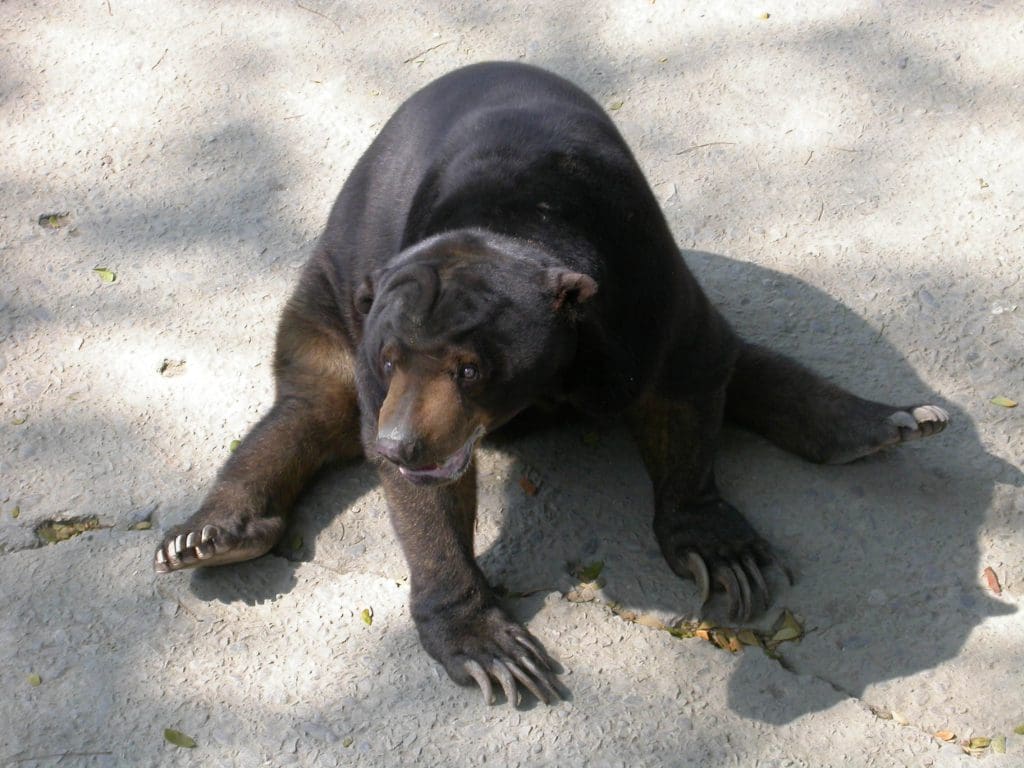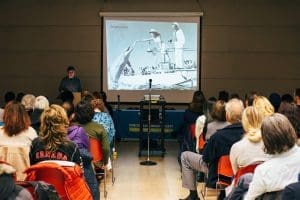
On March 27, VHS hosted a presentation in Vancouver by Rob Laidaw, executive director of Zoocheck, on animals in captivity.
Titled Nature in a box: the paradoxical and dangerous world of zoos and aquariums, Laidlaw’s talk was a compelling indictment of the captive animal industry. Drawn from his own research and long experience of monitoring the industry, including visiting hundreds of zoos and aquariums around the world, the case against captivity was overwhelming. Below are some of the key points from the presentation.
Space, freedom and family
A major criticism of captive animal facilities concerns lack of space for animals, which Laidlaw explained is often not obvious to visitors:
“Space is a core consideration for nearly all captive animals, yet it’s something that is often overlooked, ignored or even dismissed by many animal caretakers. Some claim that animals don’t need a lot of space because they only travel when they are looking for food. Therefore, they say that if food is provided, the animals don’t bother traveling. That’s a myopic and unscientific perspective because animals are known to move around for a diversity of reasons, not just to find food. And when adequate space isn’t provided, there can be detrimental physical, psychological and social consequences to the animals. All animals should be provided with the largest living spaces possible. There’s no such thing as a cage that is too big.”

Captive animals also lose the ability to make choices because of their restricted and often barren environments, which are damaging to their welfare. Laidlaw described how they’re also deprived of their natural social context, such as being part of a family or larger social grouping.
“In addition to space, additional critical quality of life considerations include freedom of choice, proper social context and stimulation and activity, but these too are often given short shrift. When that happens animals suffer physically and they also suffer psychologically, as they can experience negative emotional states, like boredom, frustration, anxiety, fear and anger. All aspects of animal welfare should be considered if the interests and wellbeing of the animals are a priority.”
Laidlaw recounted an experience that perfectly contrasted the lives animals have in nature versus the deprivation they experience in captivity. While visiting a zoo he noticed a non-captive lizard roaming the facility’s grounds, later finding the same species on display.
“After observing that changeable lizard moving about freely, running, climbing and foraging, and then seeing it’s captive counterpart in a tiny, glass-fronted exhibit unable to engage in any natural movements or behaviours, I realized just how abnormal the situation of the captive was. Nature should be what’s considered normal, not the animal in the cage.”
Zoos’ claims about “education” lack evidence
It’s common for zoos and aquariums to claim that they provide “education” about the animals they display, but Laidlaw said there was little evidence this was true and cited research that clearly contradicts such claims.
“There have been a number of studies examining how long zoo visitors look at animals. The results show that for some animals, particularly if they are not active, observation times can vary from about eight seconds to 90 seconds. There’s not much that can be learned about an animal in that length of time.”
He gave a sad example to illustrate the point:
“My colleague was visiting a large Canadian zoo to see a bittern, a relatively small wading bird, in one of the zoo’s indoor pavilions. He decided to time how long people actually looked at the bittern. While he expected visitor observation times to be short since the bittern wasn’t one of the zoo’s popular, charismatic mega-vertebrates, like lions, bears and elephants, he was still astounded when the average length of time the bittern was observed turned out to be less than one second. In fact, most people just glanced as they walked by, even when the bird was pointed out to them.”
The future: alternatives to traditional zoo model
Laidlaw ended his presentation with a description of some alternative concepts to zoos and aquariums and a call for change.
“The traditional zoo model, with its relatively unfettered viewing of animals and mass-market entertainment approach is outdated and no longer makes sense. There are many new exciting kinds of facilities and technologies that should replace traditional zoos. They include regionally-focused wildlife facilities, multi-disciplinary centers, sanctuaries, specialist education and conservation facilities, virtual zoos and innovative interactive film technologies.”
The nearly 100 people attending the talk, judging by their enthusiastic applause, left with new insights into what life is like for captive animals, and, perhaps, a new-found desire to work for an end to the places where they are incarcerated.
VHS has long fought for animals in captivity, exposing poor treatment of animals at the Greater Vancouver Zoo and opposing cetacean captivity at the Vancouver Aquarium, including publishing this joint report with Zoocheck.
